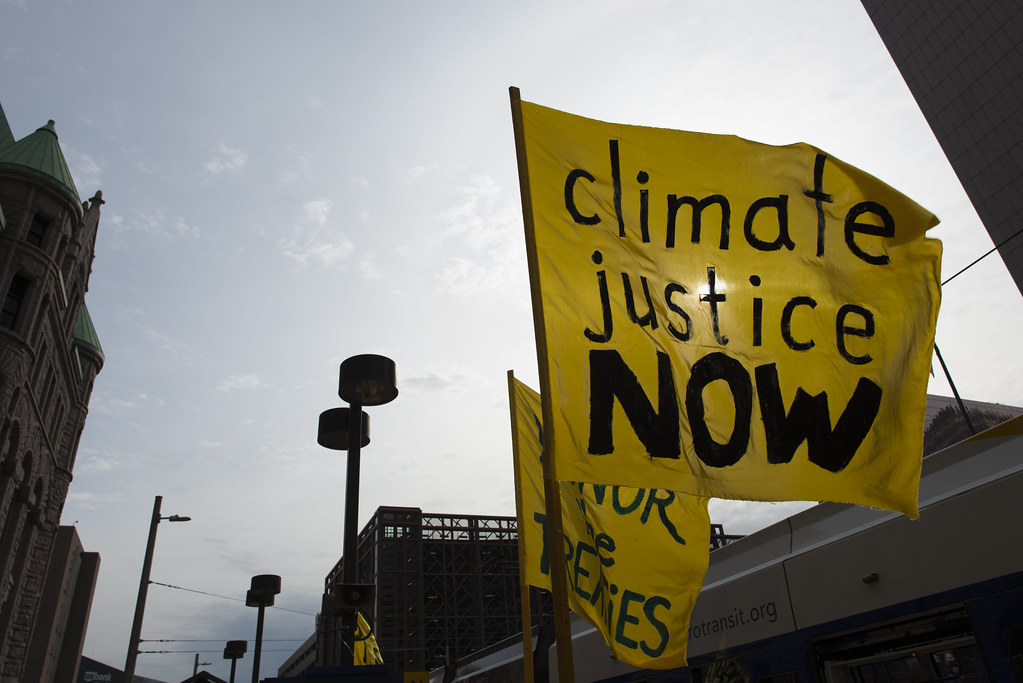Update (June 2022):
Exposing False Solutions, our report on Washington State’s cap-and-trade program, is now live!
Washington state must cut greenhouse gas emissions from energy use in half within the next ten years if we have any chance in meeting long term state requirements to nearly eliminate pollution that causes climate change by 2050. To achieve this goal – let alone achieve it in a way that protects communities from the impacts of climate change and fossil fuel pollution and the pitfalls of an unjust transition – requires much more than a change in the price of oil, gas, or coal, it requires a Just Transition of our entire economy.
We must transition from an extractive economy reliant on systemic racism and sacrificing frontline communities, toward an economy rooted in innovative, renewable resources and aimed at the well-being of people and our state. To accelerate this transition the people most impacted by pollution must lead the decision-making, communities must have self-determination over the places they live and work, jobs and livelihoods must regenerate – not degrade – the air, water, and land, and we must use renewable resources and practices.
A Just Transition requires significant investments in reducing pollution and building community resilience and capacity against climate change, on top of the historical and persistent threats we face disproportionately, including COVID-19 and chronic health conditions, police bias and over incarceration, economic inequity, and historical exclusion from decision making spaces. This transition also requires divestment from these systems and real, enforceable policies on the emissions of major polluters, emissions reduction at the source, and keeping fossil fuels in the ground.
There is no just pathway to our emissions goals that relies on the commodification of our air, land, and water, which we depend on for life. While incentives and disincentives – applied equitably – are part of a transition toolkit, we know we cannot achieve our vision of climate justice by just making it more expensive to pollute.
Cap and Trade: A False Promise
We recognize and stand in solidarity with frontline communities who have shared experiences with cap and trade and produced data showing that this approach has not only failed, despite claims to the contrary, but has reinforced environmental racism by:
- Allowing emissions trading across sectors, rather than reductions, which has concentrated pollution in already overburdened communities,
- Making the claim of capping emissions while allowing offsets instead of reductions, leakage of emissions across borders, and over allocating allowances,
- Putting models of economic efficiency over real world effectiveness and the impacts on people, health, and the environment.
We believe cap and trade, in any form that it has existed, will not advance climate justice and is a distraction from solutions that truly limit pollution, such as the Clean Energy Transformation Act which requires utilities to achieve 100% clean electricity and achieve the equitable distribution of benefits and reduction of burdens.
Carbon Tax: A Transitional Revenue Source
Carbon taxes, like sales taxes, are regressive and require financial mitigation for people with lower incomes. While carbon taxes may create disincentives to use fossil fuels, without an enforcement mechanism to reduce emissions, they are insufficient to do the real work. While a carbon tax cannot be counted on to cut pollution, it can be a temporary source of revenue for the investment we need for a Just Transition. Front and Centered believes as a revenue source, a carbon tax can be a useful tool if it meets certain requirements and that’s why we’re working with legislators, including Representative Debra Lekanoff, on a revenue policy that can meet the needs of frontline communities. We will also continue to work on real caps on major polluters in our state that do not create options to pay to pollute.
Our Requirements for an Equitable Carbon Tax
- Establish a clear intent, measurable goals, and enforcement.
- Ensure no community faces increased social or environmental harm, intended or unintended, as a result of this mechanism.
- Require a net progressive impact, support the transition for people with lower incomes and workers.
- Establish procedural equity and engage communities most impacted by climate pollution and impacted workers in the decision making and oversight of investment priorities and require tribal consultation.
- Ensure that at least 35% of investments provide direct and meaningful benefits to vulnerable populations in highly-impacted communities – as defined by the Washington Environmental Health Disparity Map – and tribal communities; and that at least 1% of total revenue must be dedicated to community-led project development, planning, and participation.
- Ensure that at least 10% of investments be used for programs, activities, or projects formally supported by a resolution of a tribal nation, with priority given to otherwise qualifying projects directly administered or proposed by a tribal nation.
- Dedicate carbon fee/tax revenue to investments that:
- Reduce air pollution and transition our state away from greenhouse gas emissions in an effort to go below the Washington climate pollution limits and dramatically reduce the health impacts of communities most impacted by pollution.
- Assist with economic transitions to a clean energy economy, including direct support for workers and communities in economic transition.
- Improve the resiliency to climate change of waters and forests and support biodiversity conservation and natural climate solutions.
- Provide financial mitigation to people with lower incomes and workers transitioning from the fossil fuel industries.
- Tie investments to creation of good, high wage, union jobs in Washington state and assist with economic transitions to a clean energy economy, including direct support for impacted workers and communities.
- Prioritize investments that achieve co-pollutant benefits.
- Maintain Washington’s manufacturing economy and avoid leakage of emissions to other jurisdictions.
- Require investments that reduce emissions before depending on carbon sequestration.
Image credit: “Climate justice now” by Fibonacci Blue is licensed under CC BY 2.0



